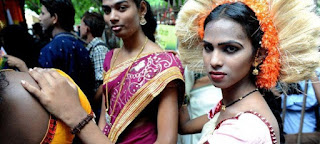Horses in Hindu culture
In Hindu mythology, mystical horses hold a significant and symbolic place, representing various aspects of divine power, cosmic order, and spiritual significance. These celestial equines are woven into ancient scriptures, epics, and religious texts, enriching the intricate fabric of Hindu mythology. Among these, several noteworthy mystical horses stand out:
Ucchaishravas, emerges as a legendary white, seven-headed horse during the churning of the cosmic ocean (Samudra Manthan). It is revered as the king of horses and finds association with Lord Indra, the ruler of the heavens. According to Puranic narratives, Uchchaihshravas was acquired during the churning of the ocean and is often depicted as Lord Indra's divine mount.
Hayagriva, a unique incarnation of Lord Vishnu with a horse's head, embodies wisdom, knowledge, and the preservation of sacred scriptures. Hayagriva is venerated as the deity who safeguarded the Vedas, the ancient Hindu scriptures, from theft by demons, ensuring the continuity of spiritual wisdom.
The Ashvins, or Ashwini Kumaras, take on the role of twin divine healers and physicians in Hindu mythology. They are often depicted riding chariots drawn by horses. These celestial twins are revered as the divine physicians, bestowing healing and protection upon those in need.
In some Hindu traditions, the horse is linked to Lord Vajrapani, a potent Bodhisattva in Buddhism and a guardian deity in Hinduism. Vajrapani is often depicted riding a horse while holding a vajra (thunderbolt), symbolizing his strength and protective attributes.
Horses also serve as symbolic elements in various Hindu rituals, festivals, and religious art. They epitomize attributes like speed, energy, and strength, which are closely linked to the divine forces upholding the cosmic order.
In addition to their images as celestial divine creatures, horses in Hindu mythology have a historical and heroic association with the noble Aryas, who played a crucial role in introducing horses to the Indian subcontinent and utilizing them in military campaigns.
Legend has it that the Aryas, a noble and warrior class of people, were responsible for bringing horses to the Indian subcontinent. Their mastery of horsemanship and equestrian skills was renowned, and they harnessed the strength and agility of these magnificent creatures for both practical and strategic purposes.
The Aryas' expertise in horsemanship was particularly instrumental during ancient times when they used horses in military campaigns. These powerful and swift animals became invaluable assets in battles and conquests, allowing the Aryas to expand their territories and establish their dominance across regions. The sight of these heroic Aryas astride their noble steeds was awe-inspiring, and it symbolized not only their military prowess but also their cultural significance.
As time passed, the connection between horses and the noble Aryas became an integral part of Indian history and culture. The presence of horses in epic tales like the Mahabharata and the Ramayana further solidified their importance, portraying the heroic deeds of warriors who rode into battle on horseback.
The Ashvamedha ritual, known as the "Horse Sacrifice," is an intricate and ancient Vedic ceremony mentioned in Hindu scriptures like the Yajurveda and the Shatapatha Brahmana. Historically performed by ancient Indian kings, it holds deep significance in royal consecration and the assertion of their authority and power.
Preparation for the ritual involves selecting a white stallion of exceptional quality, symbolizing purity and strength. This horse becomes the embodiment of the kingdom as it roams freely for a specified period. Simultaneously, preparations for the Yajna, the sacrificial fire, are underway at a specially designated site, which is meticulously purified and established as a ceremonial ground.
The Ashvamedha ritual unfolds in several distinct stages. First, the chosen white stallion embarks on a journey, allowed to roam freely for a predetermined period, often lasting a year. It covers not only the king's own territory but also neighboring lands and becomes a symbolic representation of the entire kingdom. To safeguard the horse's journey and its sanctity, a retinue of priests and warriors accompanies it.
During this journey, the king sends out formal challenges to rival kings and rulers, offering them a choice: accept the king's authority and let the horse pass through their lands without opposition or choose to confront it in battle.
Upon the successful completion of its journey or the defense against challenges, the horse returns to the ritual site. Here, elaborate rituals and ceremonies ensue, invoking various deities and celestial beings. The central moment of the ritual arrives when the horse is symbolically offered to the gods in a sacred fire, accompanied by recitations of Vedic hymns and mantras. Additionally, offerings are made to the participating priests and participants.
The Yajna continues with a series of offerings into the fire, with the belief that the smoke and flames carry these offerings to the gods and celestial entities, acting as a bridge between the earthly and spiritual realms. The ritual culminates in the anointment of the king, signifying not only his authority but also divine approval. It is during this phase that the king often receives titles and honors, reinforcing his role as the ruler.
In the Ashvamedha ritual, there is a symbolic aspect where the queen, as part of the ceremony, traditionally lies down beside the sacred horse. This act was believed to bring about blessings for the kingdom, including the hope for a bountiful harvest.
Thus, in Hindu mythology and history, horses represent not only the divine and mystical but also the indomitable spirit of noble heroes who introduced these majestic creatures to the Indian subcontinent and employed them as essential allies in their epic military campaigns. Their legacy continues to endure, weaving a rich tapestry of symbolism, valor, and cultural significance.
Embedded YouTube Video



